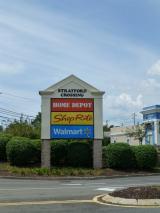Superfund Sites in Reuse in Connecticut
If you are having trouble viewing the map in your browser, click the 'View larger map' link below
Barkhamsted-New Hartford Landfill 
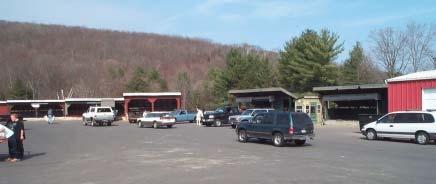 Barkhamsted-New Hartford LandfillThe 98-acre Barkhamsted-New Hartford Landfill Superfund site is located in the towns of Barkhamsted and New Hartford, Connecticut. From 1974 until 1988, the unlined landfill accepted municipal and industrial wastes. A barrel-crushing and metal reclamation operation was also active on site. In 1983, a state inspection found leaking drums containing hazardous solvents. Site operations contaminated groundwater.
Barkhamsted-New Hartford LandfillThe 98-acre Barkhamsted-New Hartford Landfill Superfund site is located in the towns of Barkhamsted and New Hartford, Connecticut. From 1974 until 1988, the unlined landfill accepted municipal and industrial wastes. A barrel-crushing and metal reclamation operation was also active on site. In 1983, a state inspection found leaking drums containing hazardous solvents. Site operations contaminated groundwater.
EPA placed the site on the National Priorities List (NPL) in 1989. In the fall of 1999, the landfill owner installed a cap, a runoff and leachate collection and treatment system, and a landfill gas capture system. Natural processes are underway that break down contaminants in the groundwater. The groundwater remedy includes long-term monitoring of groundwater, surface water and sediment as well as restrictions to prevent contact with contaminated groundwater. Today, the site consists of three separate areas: (1) a fenced landfill cap along with its appurtenances; (2) a recycling and transfer station operated by RRDD1; and (3) a parcel of land adjacent to the landfill consisting of an active solar farm that generates 1.5 megawatts of electricity and helps offset recycling transfer operating costs.
Last updated October 2019
As of December 2019, EPA had data on one on-site business. This business employed 11 people and generated an estimated $933,000 in annual sales revenue. For additional information click here.
For more information:
Cheshire Ground Water Contamination
The 15-acre Cheshire Ground Water Contamination Superfund site is located in Cheshire, Connecticut. From 1966 to 1980, two companies made plastic molding on site. Operations contaminated soil and groundwater with chemicals and solvents. In 1990, EPA placed the site on the National Priorities List (NPL). Cheshire Associates, under state and EPA orders, cleaned up the site by removing some contaminated soil. EPA extended the public water supply to residents with drinking water wells affected by site contamination. Carten Controls relocated to the site in 1996. After cleanup, EPA took the site off the NPL in 1997. Carten Controls continues to operate its semiconductor parts manufacturing facility on site.
Last updated October 2019
As of December 2019, EPA had data on one on-site business. This business employed 15 people and generated an estimated $3,800,000 in annual sales revenue. For additional information click here.
For more information:
Durham Meadows
The Durham Meadows Superfund site is located in Durham, Connecticut. Merriam Manufacturing Company and Durham Manufacturing Company made metal cabinets, boxes and other items on site from 1851 until 1998. Improper storage and disposal practices contaminated site soil and groundwater. In 1982, the Connecticut Department of Energy & Environmental Protection (CT DEEP) found contamination in nearby private drinking water wells. Merriam Manufacturing Company and Durham Manufacturing Company installed filters on affected residential wells.
EPA placed the site on the National Priorities List (NPL) in 1989. Cleanup activities include providing an alternate water supply for affected residents, removing soil, and monitoring and containing groundwater contamination. Cleanup also includes placing restrictions on land and groundwater use and investigating areas with possible indoor air risks. Cleanup of the Merriam Manufacturing Company area of the site is now complete. The town of Durham put an area-wide groundwater use restriction ordinance in place in 2015. Plans for the alternative water supply and cleanup of the Durham Manufacturing property are complete; construction is expected to begin in 2019. CT DEEP and EPA are working with the responsible parties and local officials to put final land and groundwater use controls in place. The Durham Manufacturing Company continues to make metal boxes on site. Commercial and public service reuses are also present on site. The site is also home to a volunteer ambulance corps, the District Board of Education, churches and many businesses.
Last updated October 2019
As of December 2019, EPA had data on one on-site business. This business employed 99 people and generated an estimated $40,939,850 in annual sales revenue. For additional information click here.
For more information:
Gallup's Quarry 
The Gallup’s Quarry Superfund site is a 29-acre abandoned gravel pit in Plainfield, Connecticut. During the 1970s, the site owner accepted chemical wastes without a permit. Disposal activities led to site soil and groundwater contamination. After the Connecticut Department of Energy & Environmental Protection removed waste drums and contaminated soil, EPA placed the site on the National Priorities List (NPL) in 1989. EPA’s cleanup plan includes monitoring of natural processes to clean up groundwater and land use restrictions. Long-term soil, sediment and groundwater monitoring are ongoing.
Today, the Plainfield Renewable Energy biomass facility is located on site. The facility became fully operational in 2014. The 37.5-megawatt power plant uses waste wood to generate enough electricity to power the equivalent of about 40,000 homes in Plainfield. Connecticut Light & Power purchases 80% of the generated energy under a 15-year agreement with the facility owner, while the remaining energy contributes to the regional renewable energy certificate market. Greenleaf Power bought the plant in 2015 and is now in charge of plant operations.
Last updated October 2019
As of December 2019, EPA had data on one on-site business. This business employed 3 people and generated an estimated $2,200,000 in annual sales revenue. For additional information click here.
For more information:
Higganum Cove
The 13-acre Higganum Cove site is located off Nosal Road in Haddam, Connecticut. From the 1840s until 1983, various manufacturing operations took place on site. These included dyeing of fabrics and yarn and the production of bridge netting, marine paints and carbonless copy paper. Following reports of inappropriate handling of hazardous substances, the Connecticut Department of Energy & Environmental Protection (CT DEEP) performed site inspections from 1983 to 1989. The inspections found site soils and wetlands contaminated with industrial solvents, metals and polychlorinated biphenyls. In 2013, CT DEEP referred the site to EPA for a removal evaluation.
After EPA identified the need for a removal action in 2014, EPA began emergency cleanup actions at CT DEEP’s request. These actions included excavation and disposal of contaminated soils and wetlands restoration. EPA completed cleanup in late 2015. The cleanup actions facilitated reuse at the site. Through collaboration between EPA, CT DEEP and local officials, the site is now home to a nature park. The park includes hiking trails, picnic tables, a kayak launch and restored wetlands for the public’s enjoyment.
Last updated October 2019
As of December 2019, EPA did not have economic data related to on-site businesses, or economic data were not applicable due to site use. For additional information click here.
For more information:
Kellogg-Deering Well Field
The Kellogg-Deering Well Field Superfund site is located in Norwalk, Connecticut. The site consists of a 10-acre municipal well field and the adjacent area that contributes to the well field contamination. Since 1955 the city of Norwalk has operated four municipal supply wells on site. During routine sampling in 1975, the city found elevated levels of trichloroethylene (TCE) at the well field. Afterwards, the city shut down wells with unacceptable levels of TCE. Inspections by the Connecticut Department of Energy & Environmental Protection between 1975 and 1980 found several hazardous chemicals in site groundwater and soils.
EPA placed the site on the National Priorities List (NPL) in September 1984. Cleanup included installing a wellhead treatment facility to allow continued use of the well field, soil vapor treatment, groundwater extraction and treatment, and institutional controls. Routine maintenance and monitoring activities are ongoing. A supplemental investigation identified the primary source of contamination, located about a half-mile east of the well field. Cleanup of source-area soils and groundwater began in 1996. Soils met cleanup goals in 2006. Groundwater remediation is ongoing. The municipal well field continues to operate and provides water to about 45,000 residents in Norwalk. Commercial and residential uses remain on site. Commercial uses include office space, a shopping plaza, a car wash and a restaurant.
Last updated October 2019
As of December 2019, EPA had data on 4 on-site businesses. These businesses employed 5 people and generated an estimated $1,215,000 in annual sales revenue. For additional information click here.
For more information:
Linemaster Switch Corporation
The 45-acre Linemaster Switch Corporation Superfund site is located in Woodstock, Connecticut. Electrical and pneumatic foot switches and wiring harness manufacturing has occurred on site since 1952. Site operations use chemicals, paint and thinners. Past operation practices resulted in groundwater, sediment, surface water and soil contamination.
In 1990, EPA added the site to the National Priorities List (NPL). Cleanup activities include soil and groundwater treatment. The groundwater treatment system remains in operation. Today, the Linemaster Switch Corporation continues to manufacture electrical power switches, air valves, electrical cord sets and metal name plates on site. Several residences, a banquet facility, a restaurant and an inn are also located on site.
Last updated October 2019
As of December 2019, EPA had data on 2 on-site businesses. These businesses employed 175 people and generated an estimated $45,352,000 in annual sales revenue. For additional information click here.
For more information:
Mitral Corporation
The 5-acre Mitral Corporation site is located in Harwinton, Connecticut. Between the mid-1960s and late-1980s, Mitral Corporation did metal stamping and tooling, tumbling, sanding, degreasing and other machining work on site. Waste materials included used solvents, sludge, waste oil and scrap metal. The Connecticut Department of Energy & Environmental Protection conducted inspections and subsequently referred the site to EPA for removal evaluation.
Beginning in 2007, EPA conducted cleanup activities. EPA removed asbestos-contaminated products, demolished an old factory building, removed sludge and storage tanks, removed and treated soil, and treated water. After EPA completed its cleanup in 2009, the site was vacant for five years. In 2012, two residents living next to the site purchased the property. The new owners planted a few hundred evergreen trees and plan to plant additional evergreens to sell as Christmas trees. They are considering selling the trees to benefit the Fidelco Guide Dog Foundation.
Last updated October 2019
As of December 2019, EPA did not have economic data related to on-site businesses, or economic data were not applicable due to site use. For additional information click here.
For more information:
Mukluk Preserve
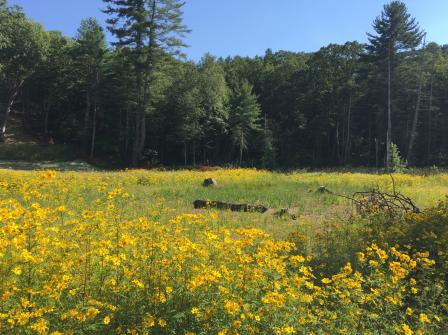 Mukluk PreserveThe 17-acre Mukluk Preserve site is a former skeet shooting range located in Sprague, Connecticut; it is part of the larger 645-acre Sprague Land Preserve. Cleanup included excavation and disposal of almost 28,000 tons of soil contaminated with lead and polyaromatic hydrocarbons. EPA coordinated closely with Connecticut Department of Energy & Environmental Protection and the town of Sprague to restore the site. The town provided all of the plantings/saplings used for restoration. EPA completed restoration of the site and supported its return to use as a recreation area for hiking, fishing, hunting, horseback riding, cross-country skiing, canoeing and other activities.
Mukluk PreserveThe 17-acre Mukluk Preserve site is a former skeet shooting range located in Sprague, Connecticut; it is part of the larger 645-acre Sprague Land Preserve. Cleanup included excavation and disposal of almost 28,000 tons of soil contaminated with lead and polyaromatic hydrocarbons. EPA coordinated closely with Connecticut Department of Energy & Environmental Protection and the town of Sprague to restore the site. The town provided all of the plantings/saplings used for restoration. EPA completed restoration of the site and supported its return to use as a recreation area for hiking, fishing, hunting, horseback riding, cross-country skiing, canoeing and other activities.
Last updated October 2019
As of December 2019, EPA did not have economic data related to on-site businesses, or economic data were not applicable due to site use. For additional information click here.
For more information:
Nutmeg Valley Road
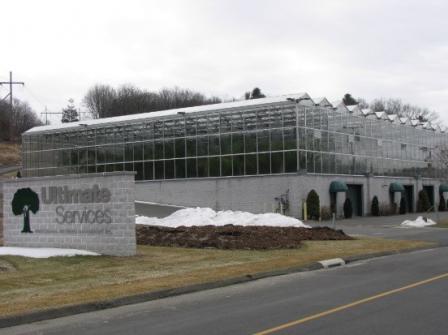 Nutmeg Valley RoadThe 28-acre Nutmeg Valley Road Superfund site is located in Wolcott, Connecticut. Beginning in the 1940s, metalworking and finishing shops operated on site. Two of these shops disposed of chemicals in site soils. These improper disposal practices contaminated private drinking water wells near the site. In 1989, EPA placed the site on the National Priorities List (NPL). In 1992, an emergency cleanup action addressed surface soil contamination and a potential source of groundwater contamination. After the cleanup action, groundwater studies found contaminant levels were naturally decreasing. The studies also found no evidence of widespread groundwater contamination. EPA took the site off the NPL in 2005.
Nutmeg Valley RoadThe 28-acre Nutmeg Valley Road Superfund site is located in Wolcott, Connecticut. Beginning in the 1940s, metalworking and finishing shops operated on site. Two of these shops disposed of chemicals in site soils. These improper disposal practices contaminated private drinking water wells near the site. In 1989, EPA placed the site on the National Priorities List (NPL). In 1992, an emergency cleanup action addressed surface soil contamination and a potential source of groundwater contamination. After the cleanup action, groundwater studies found contaminant levels were naturally decreasing. The studies also found no evidence of widespread groundwater contamination. EPA took the site off the NPL in 2005.
Industrial, commercial and some residential uses are ongoing at the site. To further revitalize the area, the town of Wolcott made infrastructure improvements to area roads and offered visual enhancement incentives such as debris pickup and free paint for property owners. Local officials point to site improvements and the site’s removal from the NPL as factors that led to the construction of a $2 million state-of-the-art greenhouse next to the site. The town of Wolcott expects these factors to encourage additional commercial and industrial development at the site. Recently, a new commercial building for Ultimate Services Professional Grounds Management was constructed at the site.
Last updated October 2019
As of December 2019, EPA had data on 18 on-site businesses. These businesses employed 60 people and generated an estimated $7,901,270 in annual sales revenue. For additional information click here.
For more information:
Old Southington Landfill 
The 13-acre Old Southington Landfill Superfund site is located in Southington, Connecticut. The municipal landfill operated on site from the 1920s until 1967. Closure activities included compacting loose waste, covering the landfill with clean fill and reseeding the area with grasses. Between 1973 and 1980, the town subdivided and sold the landfill property for residential and commercial development. Construction of several homes and commercial businesses took place at the site and nearby. In 1979, sampling by the Connecticut Department of Public Health at Municipal Well #5 near the site found contamination in groundwater. Further investigations found groundwater, soil, sediment and surface water contamination at the site.
EPA placed the site on the National Priorities List (NPL) in 1989. Cleanup activities included permanent relocation of on- site structures, landfill capping and disposal of semi-solid sludge materials in a lined cell beneath the cap. Cleanup also included construction of a passive soil gas collection system that is part of the landfill cap and long-term groundwater monitoring. Land use restrictions are in place for properties near the landfill at potential future risk from contaminated groundwater vapors moving under the buildings.
A park is located on the former residential portion of the site. It provides a recreation area where people can walk their dogs, sit on benches and go canoeing in nearby Black Pond. The U.S. Fish and Wildlife Service will use funds from potentially responsible parties to restore ecological habitat, including waterways and natural resources affected by the site. After completion, trail maintenance work along the Quinnipiac River will allow for additional recreational use.
Last updated October 2019
As of December 2019, EPA did not have economic data related to on-site businesses, or economic data were not applicable due to site use. For additional information click here.
For more information:
Raymark Industries, Inc. 
The Raymark Industries, Inc. Superfund site includes over 500 acres near the Housatonic River in Stratford, Connecticut. From 1919 until 1989, Raymark Industries made various automotive parts on a 34-acre area at the site.
Disposal of manufacturing wastes took place at the former manufacturing site, on dozens of residential, commercial and municipal properties across town, and in the wetlands next to the Housatonic River. Contaminated groundwater beneath the former facility impacted nearby commercial and residential areas due to the intrusion of vapors into overlying homes and buildings.
EPA placed the site on the National Priorities List (NPL) in 1995. Cleanup activities included removing contaminated soil and waste from several residential properties, capping the former manufacturing property, installing vapor mitigation systems in more than 100 homes, and temporarily covering and restricting access to other properties. People near the site do not currently use groundwater for drinking purposes.
EPA considered reuse in construction of the cap over the former 34-acre manufacturing property. The cap allowed for redevelopment of the property while ensuring the remedy remained protective. EPA awarded the site a Superfund Redevelopment pilot grant in 2001. The Stratford Crossing Shopping Center, completed in 2002, currently occupies the site. The shopping center provides a mixed green and commercial space. The community enjoys access to several popular businesses, including Walmart, Home Depot, ShopRite Supermarket and Webster Bank. Investigation and cleanup activities continue on the other contaminated properties around town. In 2015, local and federal partners, including EPA, completed a removal action at Sikorsky Memorial Airport. The cleanup realigned Main Street to facilitate the extension of an airport runway safety zone. In 2015, EPA and the town jointly announced a reuse plan for a former ball field. Waste from several commercial and wetland properties will be consolidated with existing waste at the former ball field and capped. The cap will be designed by EPA to support a planned expansion of the Department of Public Works. In 2016, EPA announced their intent to allow a private developer to construct a cap on a contaminated commercial property. Discussions between EPA and the private developer about a Bonafide Prospective Purchaser Agreement (BFPP) for the contaminated commercial property are underway, negotiating the development of the site once capped. Other site uses include Yeomans Park and Athletic Field as well as the town’s Short Beach Golf Course. The locality also operates its Public Works and Parks Department on site. Industrial uses are located on part of the site.
With EPA’s mission to protect human health and the environment in mind, EPA established the Superfund Task Force in May 2017 to provide recommendations for improving and expediting site cleanups and promoting redevelopment. Based on the Superfund Task Force recommendations, EPA identified the site as a Redevelopment Opportunity site – a site with the greatest expected redevelopment potential.
Last updated July 2020
As of December 2019, EPA had data on 33 on-site businesses. These businesses employed 1,165 people and generated an estimated $280,584,360 in annual sales revenue. . For additional information click here.
For more information:
- Site Redevelopment Profile: Raymark Industries, Inc. Superfund Site (PDF)(2 pp, 603 K)
- Reuse and the Benefit to Community: Raymark Industries, Inc. Superfund Site (PDF)(9 pp, 1.3 MB)
- Superfund Site Profile Page
Scovill Industrial Landfill
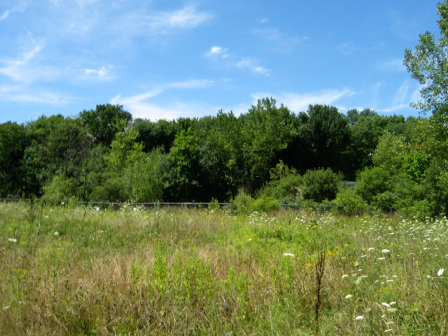 Scovill Industrial Landfill
Scovill Industrial Landfill
The 25-acre Scovill Industrial Landfill Superfund site is located in Waterbury, Connecticut. From 1919 until the mid-1970s, the Scovill Manufacturing Company used the area as a landfill. By the mid-1990s, developers had built condominiums, apartment buildings, small commercial buildings and a shopping mall on the 18-acre southern portion of the site. The northern portion of the site is an undeveloped 6.8-acre parcel known as the Calabrese parcel. In 1988, residential development underway on the Calabrese parcel uncovered industrial wastes. The Connecticut Department of Energy & Environmental Protection (CTDEEP) subsequently issued a stop-work order and removed 2,300 tons of contaminated soil along with 19 capacitors from the Calabrese parcel. CT DEEP then placed a temporary soil cap over the area and fenced it.
EPA placed the site on the National Priorities List (NPL) in 2000. In 2004, EPA helped the city of Waterbury with a reuse planning process for the site to develop future land use recommendations for the Calabrese parcel. In 2013, EPA selected the cleanup plan for the site. Cleanup activities include installation of a system to address contaminated vapors from groundwater moving through a building slab on site, targeted excavations in areas exceeding regulatory contaminant levels and placement of that soil under a soil cap on the Calabrese property. Excavated areas will be backfilled with clean fill and restored to original conditions with either new pavement or vegetation. Wetland remediation is also planned. Institutional controls for the entire site will be put in place to ensure public safety. Cleanup design allows for continued residential and commercial use at the site.
Last updated October 2019
As of December 2019, EPA had data on 18 on-site businesses. These businesses employed 202 people and generated an estimated $18,416,000 in annual sales revenue. For additional information click here.
For more information:
Solvents Recovery Service of New England 

The Solvents Recovery Service of New England Superfund site is located in Southington, Connecticut. The site includes a 4-acre former operations area and a 42-acre groundwater contamination plume. From 1955 until 1991, a hazardous waste treatment and storage facility operated at the site. During operations, spills occurred and operators stored process wastes in unlined lagoons. These practices resulted in soil and groundwater contamination. In 1979, the town of Southington discovered contamination in two public water supply wells downgradient of the site. The town closed these wells.
EPA placed the site on the National Priorities List (NPL) in 1983. EPA conducted short-term cleanup activities to remove 19 drums of contaminated materials. Cleanup activities also include treating groundwater, consolidating and capping contaminated soil, treating soil, monitoring, and restricting groundwater and land use. Cleanup construction completed in 2017; long-term monitoring and maintenance is ongoing. The U.S. Fish and Wildlife Service used funds from potentially responsible parties to restore ecological habitat, including waterways and natural resources affected by the site. In September 2017, construction was completed for a new section of the nearly 80-mile-long Farmington Canal Heritage Trail, which runs across the site, and a trail access parking lot. A 50-kilowatt solar array was also constructed to provide power for the long-term operation of the groundwater extraction system.
Last updated October 2019
As of December 2019, EPA did not have economic data related to on-site businesses, or economic data were not applicable due to site use. For additional information click here.
For more information:

